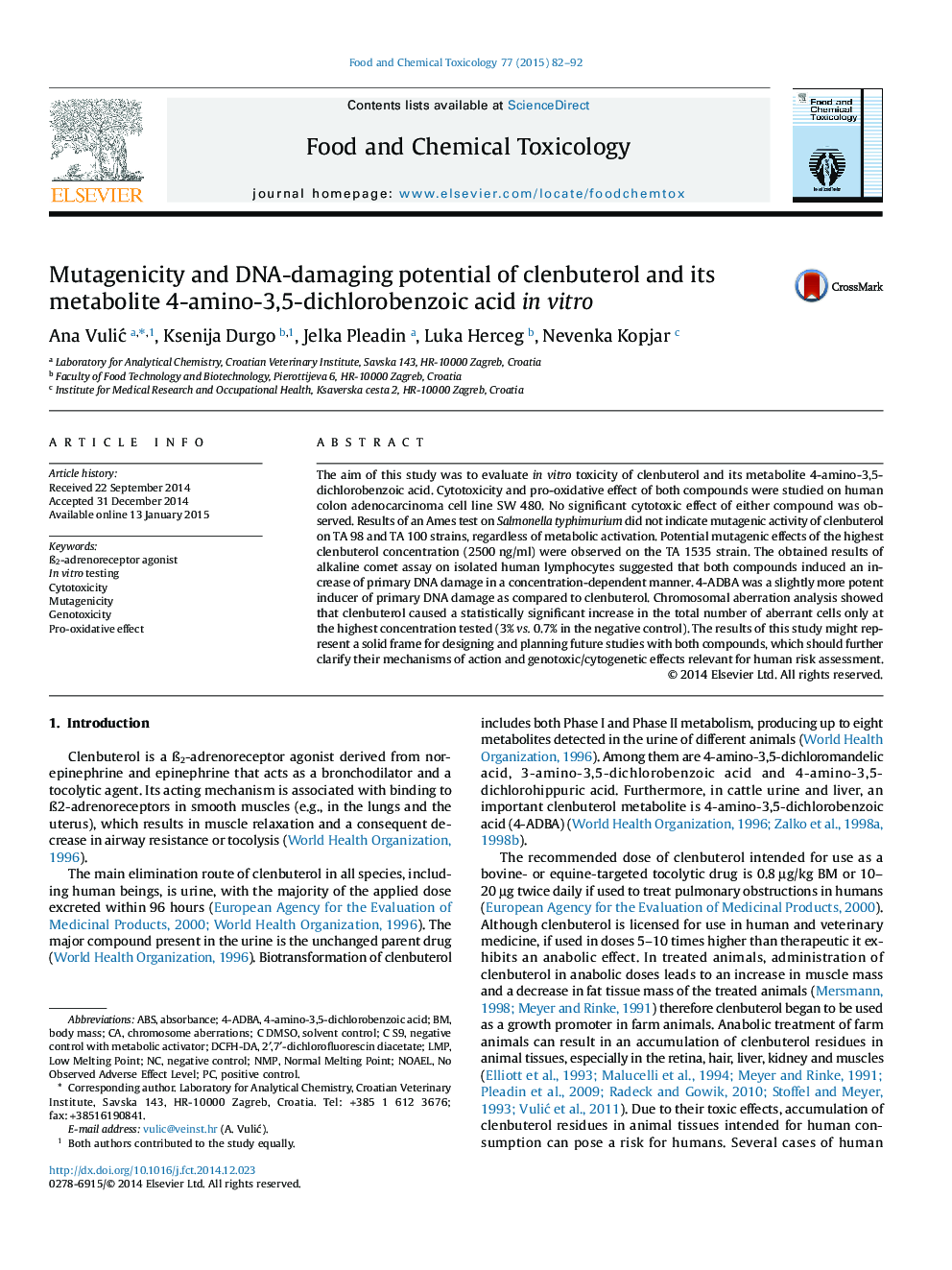| کد مقاله | کد نشریه | سال انتشار | مقاله انگلیسی | نسخه تمام متن |
|---|---|---|---|---|
| 2584961 | 1561767 | 2015 | 11 صفحه PDF | دانلود رایگان |

• Clenbuterol and 4-ADBA toxicities were studied using mutagenic, cytotoxic/genotoxic tests.
• Clenbuterol was mutagenic only on S. typhimurium TA1537 strain at 2500 ng/ml (NOAEL).
• Clenbuterol produced pro-oxidative activity in SW 480 cells after 72 h at 2500 ng/ml.
• Both substances caused primary DNA damage and chromosome aberrations in human lymphocytes.
• Clenbuterol at 2500 ng/ml significantly affected the lymphocyte chromosome structural integrity.
The aim of this study was to evaluate in vitro toxicity of clenbuterol and its metabolite 4-amino-3,5-dichlorobenzoic acid. Cytotoxicity and pro-oxidative effect of both compounds were studied on human colon adenocarcinoma cell line SW 480. No significant cytotoxic effect of either compound was observed. Results of an Ames test on Salmonella typhimurium did not indicate mutagenic activity of clenbuterol on TA 98 and TA 100 strains, regardless of metabolic activation. Potential mutagenic effects of the highest clenbuterol concentration (2500 ng/ml) were observed on the TA 1535 strain. The obtained results of alkaline comet assay on isolated human lymphocytes suggested that both compounds induced an increase of primary DNA damage in a concentration-dependent manner. 4-ADBA was a slightly more potent inducer of primary DNA damage as compared to clenbuterol. Chromosomal aberration analysis showed that clenbuterol caused a statistically significant increase in the total number of aberrant cells only at the highest concentration tested (3% vs. 0.7% in the negative control). The results of this study might represent a solid frame for designing and planning future studies with both compounds, which should further clarify their mechanisms of action and genotoxic/cytogenetic effects relevant for human risk assessment.
Journal: Food and Chemical Toxicology - Volume 77, March 2015, Pages 82–92